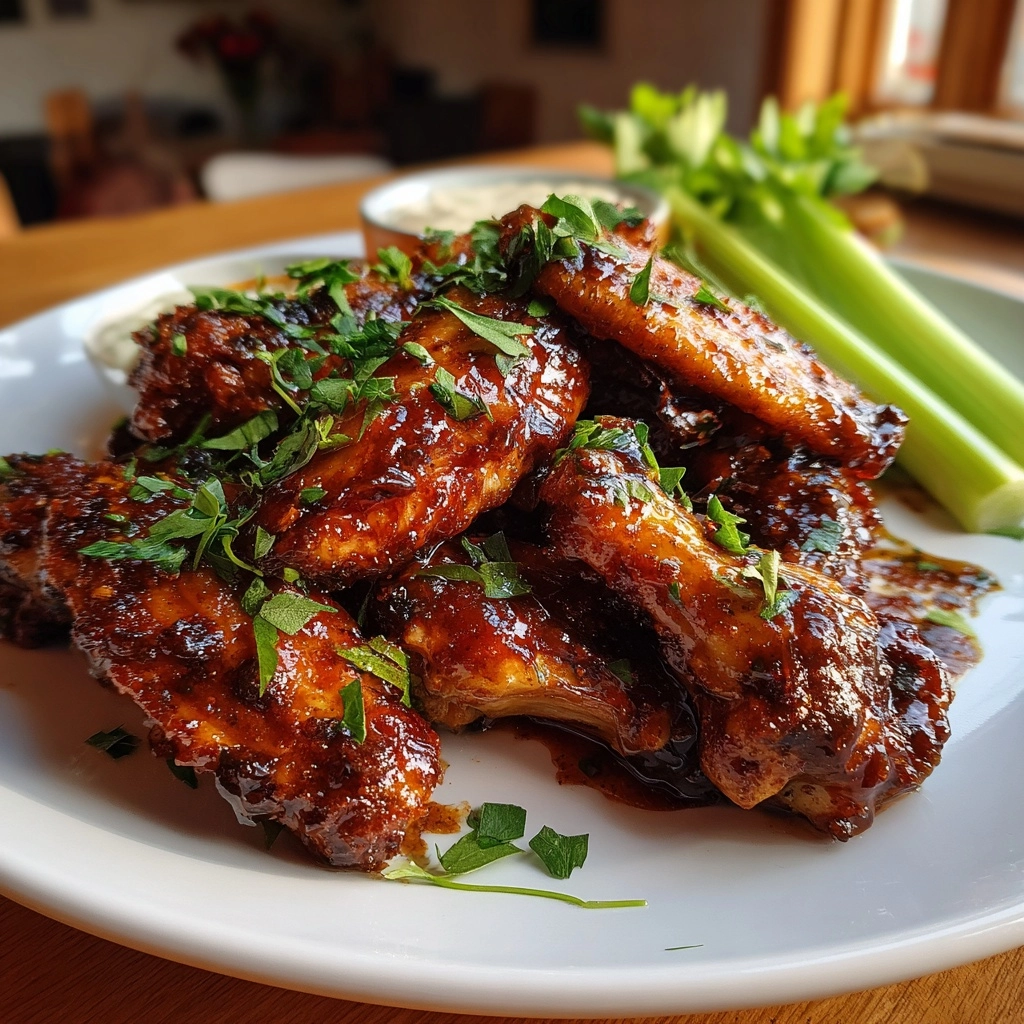Bat Wings
Have you ever marveled at the incredible flight of bats? Their wings are a fascinating blend of biology and engineering. As a passionate home cook, I find joy in exploring the wonders of nature, and bat wings are no exception. This exploration is perfect for busy moms and professionals like us, who crave quick yet enriching experiences. Whether you’re looking to impress your kids with fun facts or simply want to unwind after a hectic day, diving into the secrets of bat wings is a delightful way to spark curiosity and appreciation for the natural world.
Why You’ll Love This Bat Wings
Exploring bat wings is not just educational; it’s a fun escape from our busy lives. You’ll love how easy it is to dive into this fascinating topic, making it perfect for a quick family activity. Plus, it’s a great way to bond with your kids while sparking their curiosity. Who knew learning about flight could be so engaging? It’s a delightful blend of science and wonder that everyone can enjoy!
Ingredients for Bat Wings
To truly appreciate the marvel of bat wings, we need to look at their unique components. Here’s what you’ll need for this exploration:
- Bat wings: The star of the show! These fascinating structures are designed for flight, showcasing nature’s ingenuity.
- Muscle tissue: This is what gives bats their strength and agility. The muscle fibers allow for powerful flapping, enabling them to soar gracefully through the night sky.
- Bone structure: Bats have lightweight yet strong bones that provide the necessary support for their wings. This unique structure allows for flexibility, which is crucial for their aerial maneuvers.
- Skin membrane: This stretchy membrane connects the bat’s elongated fingers, creating a surface area that captures air efficiently. It’s essential for their ability to glide and change direction swiftly.
For those curious about the specifics, exact quantities and additional details are available at the bottom of the article for easy printing. Happy exploring!
How to Make Bat Wings
Now that we have our ingredients ready, let’s dive into the fascinating world of bat wings! Understanding their anatomy is key to appreciating how these incredible creatures achieve flight. Follow these steps to explore the unique features of bat wings.
Step 1: Study the Anatomy of Bat Wings
First, take a moment to observe the overall structure of bat wings. Their anatomy is a masterpiece of evolution. Each wing consists of elongated fingers, which are crucial for their flight. By studying this anatomy, you’ll gain insight into how bats maneuver through the air with such grace. It’s like watching a well-rehearsed dance!
Step 2: Observe the Muscle Structure
Next, let’s focus on the muscle tissue. This is where the magic happens! The muscle fibers in bat wings are specially adapted for powerful flapping. This strength allows bats to lift off and soar effortlessly. Imagine the energy it takes to flap those wings! Observing this muscle structure helps us appreciate the agility and endurance bats possess during their nightly flights.
Step 3: Analyze the Bone Structure
Now, let’s take a closer look at the bone structure. Bats have lightweight bones that provide both strength and flexibility. This unique combination is essential for their aerial acrobatics. The bones act like a sturdy framework, allowing the wings to bend and twist. It’s fascinating to think about how these adaptations enable bats to navigate through tight spaces and perform stunning aerial maneuvers!
Step 4: Examine the Skin Membrane
Finally, let’s examine the skin membrane that stretches between the bat’s fingers. This membrane is crucial for flight. It increases the surface area of the wings, allowing bats to catch air efficiently. When you see a bat gliding through the night, remember that this skin membrane plays a vital role in their ability to change direction swiftly. It’s like having a built-in parachute!
Tips for Success
- Take your time observing each component; understanding is key!
- Use a magnifying glass for a closer look at the muscle fibers and bone structure.
- Encourage your kids to ask questions; curiosity leads to deeper learning.
- Document your findings with sketches or notes to enhance retention.
- Make it a fun family activity by turning it into a mini science project!
Equipment Needed
- Magnifying glass: Perfect for examining the intricate details of bat wings. A simple pair of reading glasses can work too!
- Notebook: Great for jotting down observations. Any scrap paper will do if you’re in a pinch.
- Pencil or pen: Essential for sketching and note-taking. Crayons can add a fun twist for kids!
Variations
- Different Species Exploration: Dive into the unique adaptations of various bat species. Each has distinct wing shapes that cater to their flight styles, making for an exciting comparative study.
- Focus on Habitat: Explore how the environment influences wing structure. For instance, bats in dense forests may have shorter wings for maneuverability, while those in open areas might have longer wings for gliding.
- Include Flight Patterns: Investigate how different wing shapes affect flight patterns. Some bats are agile fliers, while others are more suited for long-distance travel.
- Incorporate Technology: Use apps or online resources to visualize bat wing anatomy. This can enhance understanding and make the exploration more interactive.
- Artistic Expression: Encourage kids to create art inspired by bat wings. They can design their own bat species with unique wing adaptations!
Serving Suggestions
- Pair with a fun fact: Share an interesting tidbit about bats while enjoying your exploration.
- Presentation: Use colorful paper or a themed tablecloth to create an engaging atmosphere.
- Drinks: Serve with a refreshing fruit juice or a spooky-themed drink for added fun.
- Snacks: Include bat-shaped cookies or fruit slices to keep the theme alive!
FAQs about Bat Wings
🚫 Don’t Buy This If…
- ❌ You hate hosting fun parties
- ❌ You don’t like saving time in the kitchen
- ❌ You only want boring, basic recipes
✅ What You’ll Get:
- ✅ 63 spooky & delicious Halloween recipes
- ✅ Creepy treats, eerie snacks, scary drinks & more
- ✅ Kid-friendly & adult-approved
- ✅ 📥 Instant digital download – start cooking today!

As we dive deeper into the world of bat wings, you might have some questions swirling in your mind. Here are a few common queries that can help clarify your understanding of these fascinating structures.
What makes bat wings different from bird wings?
Bat wings are unique because they are made of a skin membrane stretched between elongated fingers, unlike bird wings, which are primarily feathers. This design allows bats to be incredibly agile in flight, making sharp turns and quick maneuvers possible.
How do bats use their wings for navigation?
Bats utilize echolocation to navigate while flying. Their wings play a crucial role in this process, allowing them to change direction swiftly and avoid obstacles. The flexibility of their wings enhances their ability to maneuver in tight spaces.
Can all bats fly?
Yes! Bats are the only mammals capable of sustained flight. Their specialized wing structure, combined with strong muscle tissue, enables them to soar gracefully through the night sky.
Do different bat species have different wing shapes?
Absolutely! Different species of bats have varying wing shapes that cater to their specific flight styles. For instance, some bats have long, narrow wings for fast, long-distance flying, while others have shorter, broader wings for agile maneuvers in dense environments.
How do bat wings contribute to their survival?
Bat wings are essential for their survival as they allow for efficient flight, which is crucial for foraging and escaping predators. The unique adaptations of their wings enable them to thrive in diverse habitats, showcasing nature’s brilliance in evolution.
Summarizing the Experience of Bat Wings
Exploring bat wings is more than just a scientific journey; it’s an adventure that ignites curiosity and wonder. As we delve into their unique anatomy, we uncover the secrets behind their incredible flight. This experience not only enriches our understanding of nature but also creates cherished moments with our loved ones. Whether you’re sketching, observing, or simply sharing fun facts, the joy of learning together is priceless. So, let’s celebrate the marvels of bat wings and the beauty of nature, one fascinating detail at a time. It’s a delightful way to connect with the world around us!
Print
Bat Wings: Discover the Secrets Behind Their Flight!
- Prep Time: N/A
- Cook Time: N/A
- Total Time: N/A
- Yield: N/A
- Category: Biology
- Method: Observation and Analysis
- Cuisine: N/A
- Diet: N/A
Description
An exploration of bat wings and their unique adaptations for flight.
Ingredients
- Bat wings
- Muscle tissue
- Bone structure
- Skin membrane
Instructions
- Study the anatomy of bat wings.
- Observe the muscle structure that enables flight.
- Analyze the bone structure for flexibility and strength.
- Examine the skin membrane that stretches between the fingers.
Notes
- Bats are the only mammals capable of sustained flight.
- Bat wings are highly specialized for maneuverability.
- Different species of bats have varying wing shapes for different flight styles.
Nutrition
- Serving Size: N/A
- Calories: N/A
- Sugar: N/A
- Sodium: N/A
- Fat: N/A
- Saturated Fat: N/A
- Unsaturated Fat: N/A
- Trans Fat: N/A
- Carbohydrates: N/A
- Fiber: N/A
- Protein: N/A
- Cholesterol: N/A

